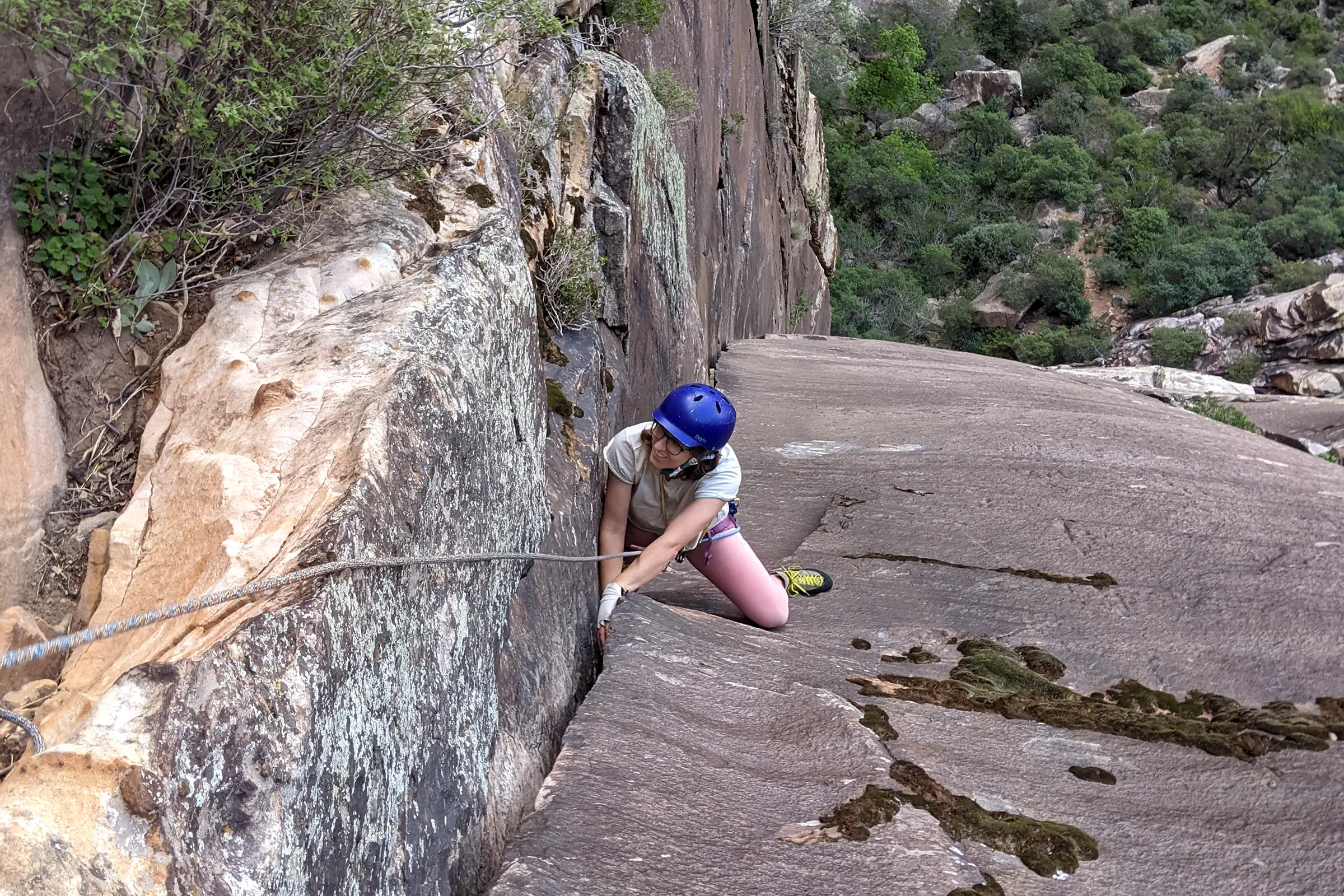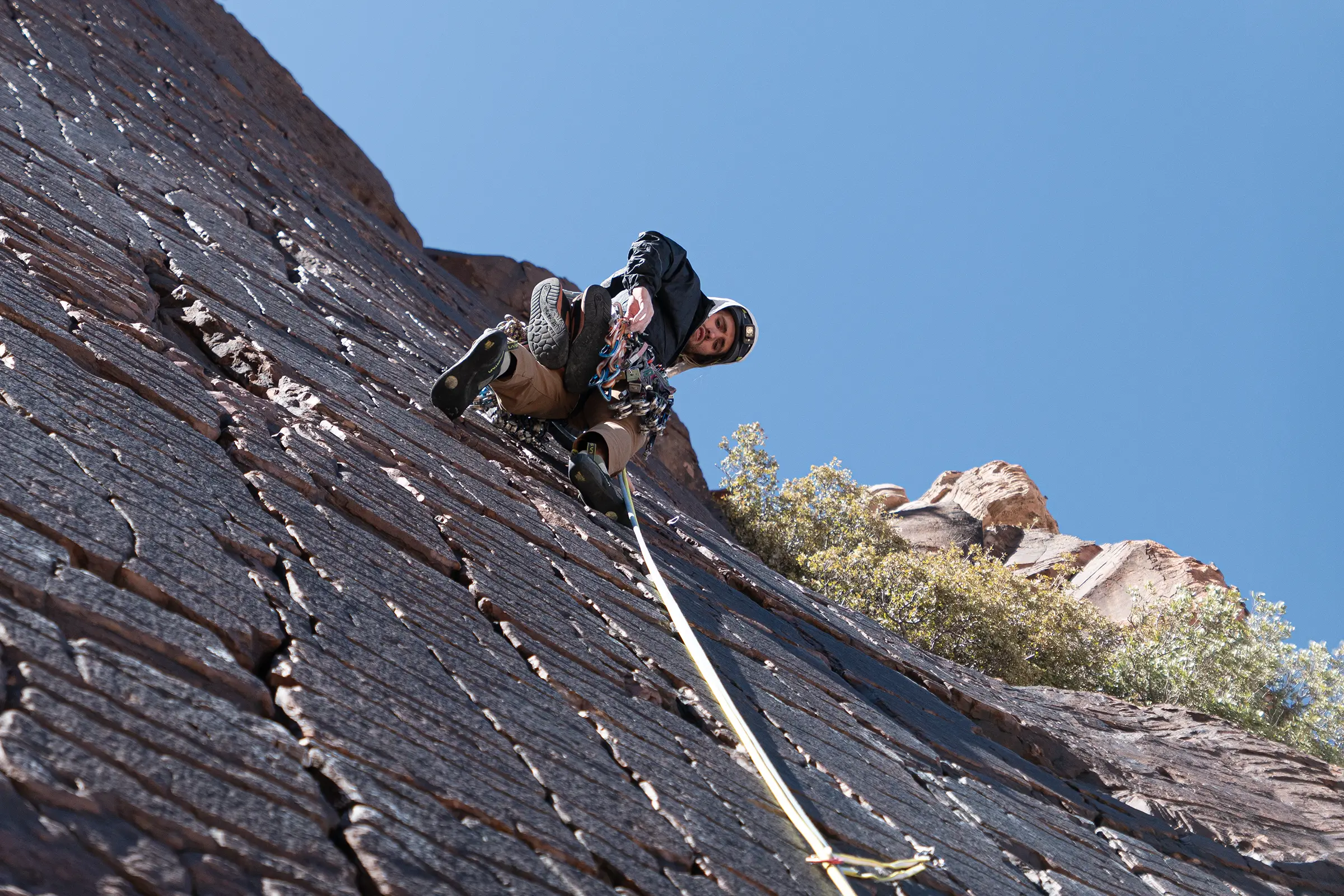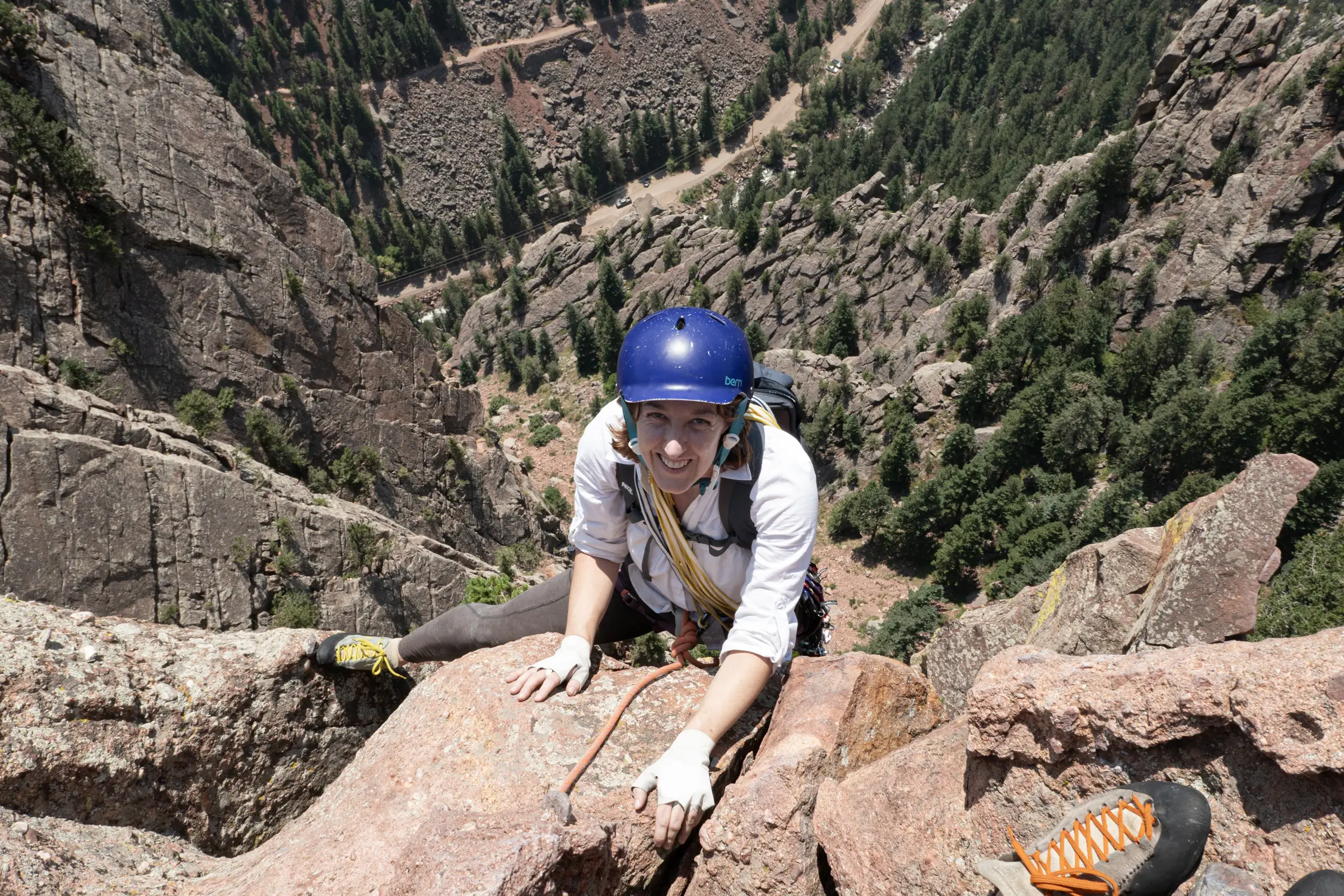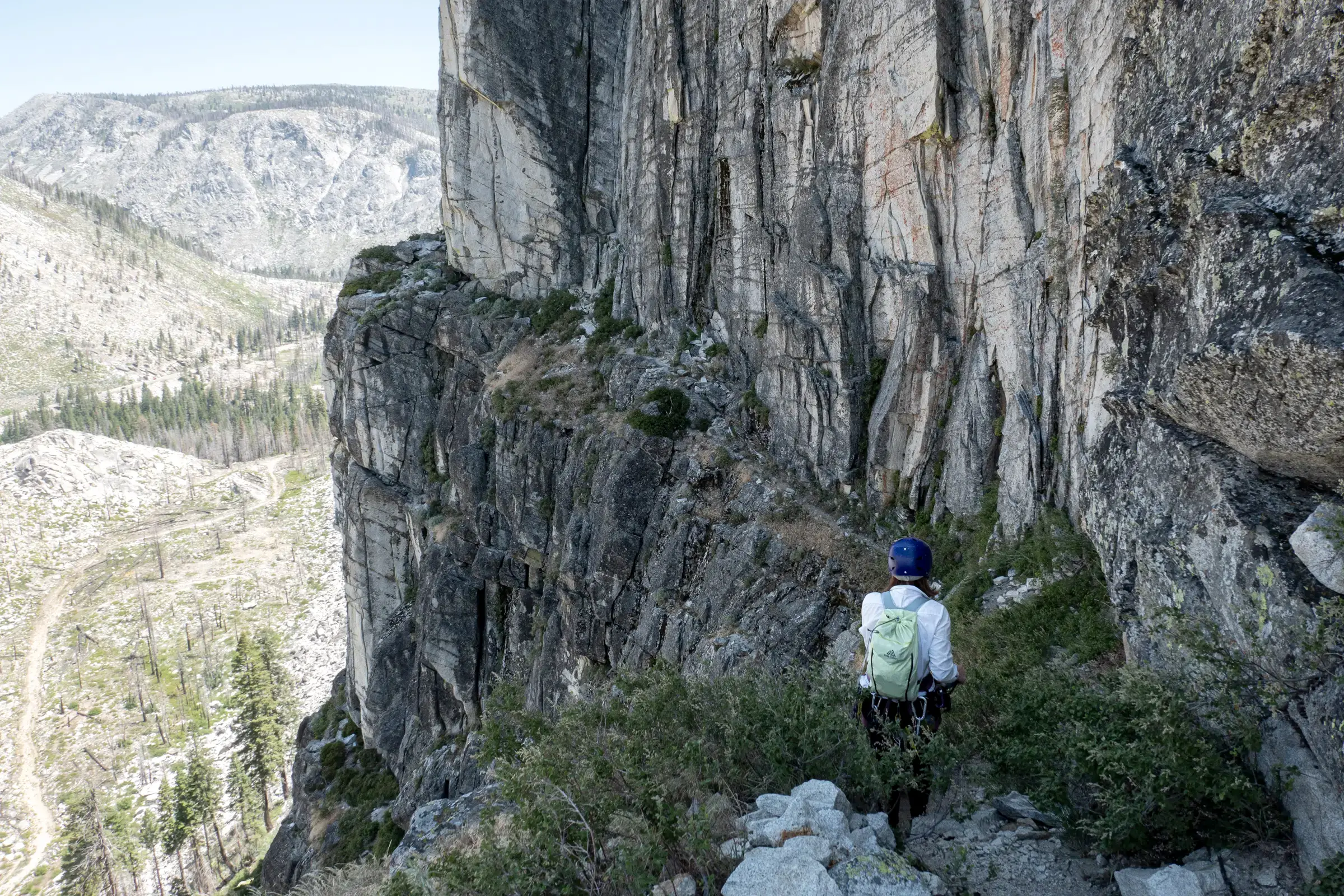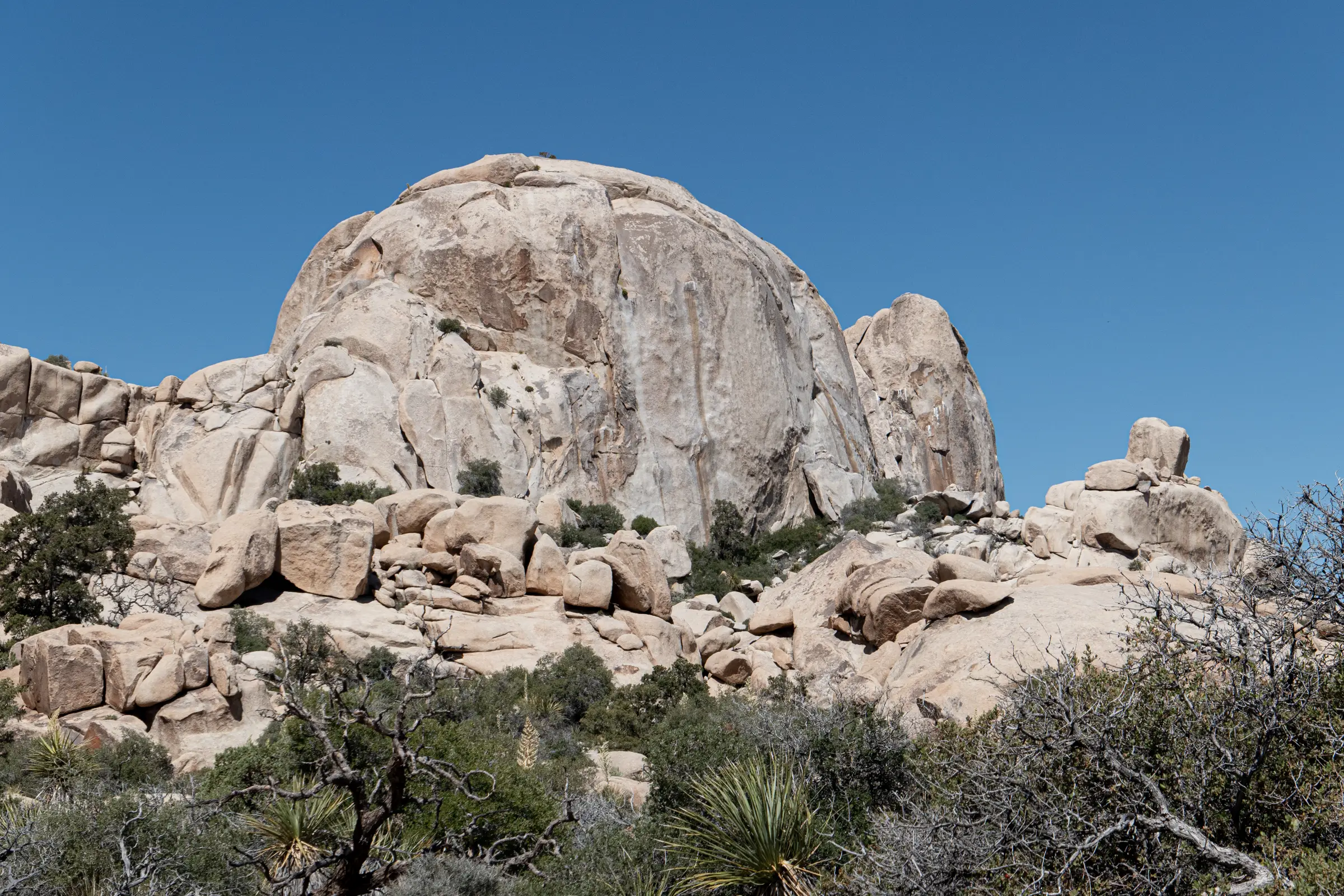This was a hard one to get started on. After a short walk from the car, finding the start wasn’t so easy. I think I misread Blitzo’s topo photo in the glare of the sun, and made a determined attempt up a crack that just wouldn’t go. Not sure if it was just insecure, or genuinely hard, but after a small fall on gear (really low with decking potential), we opted to reset to the blocky third-class section to our left. Quick and easy moves to the ledge, and then a walk over to the crack system.
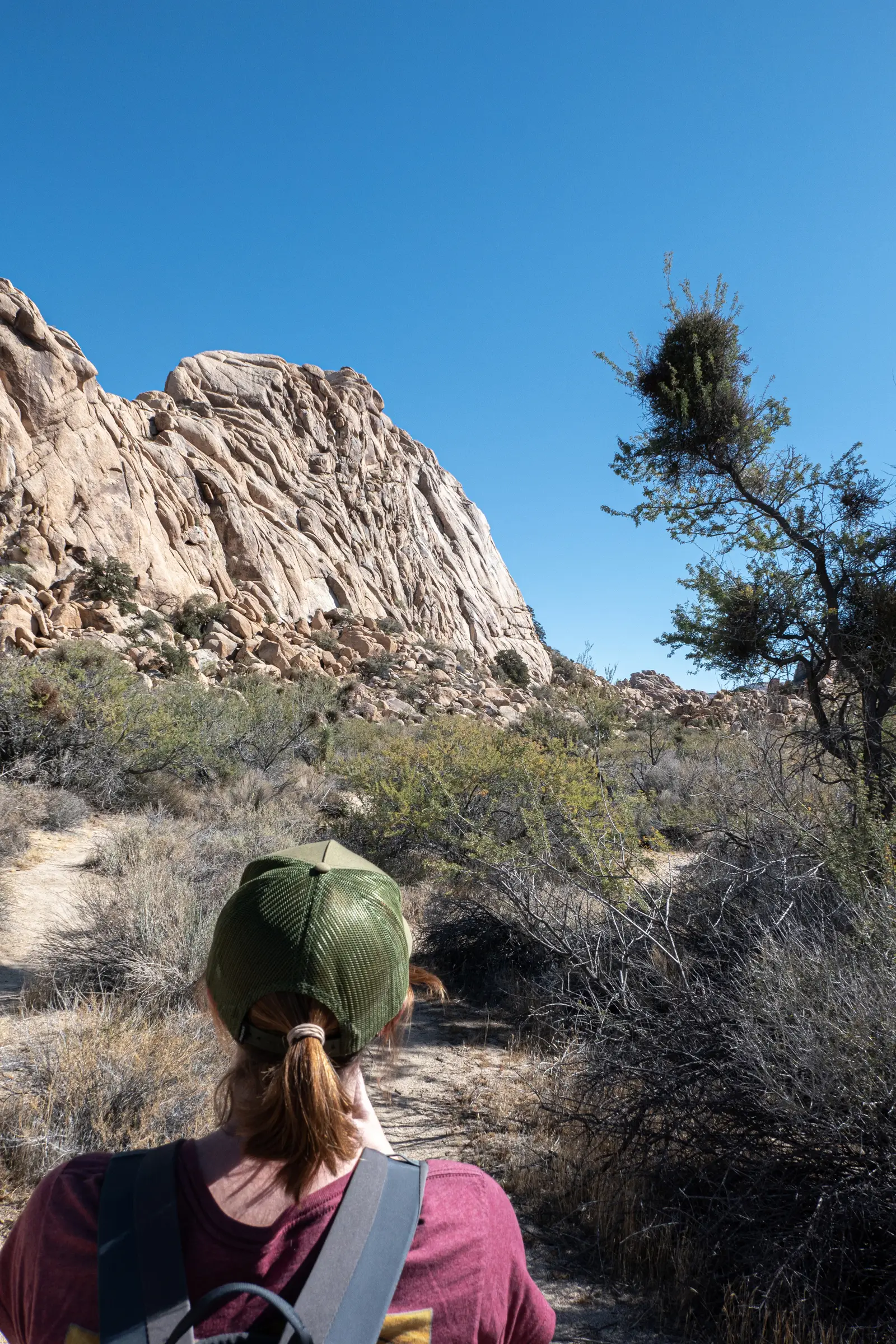
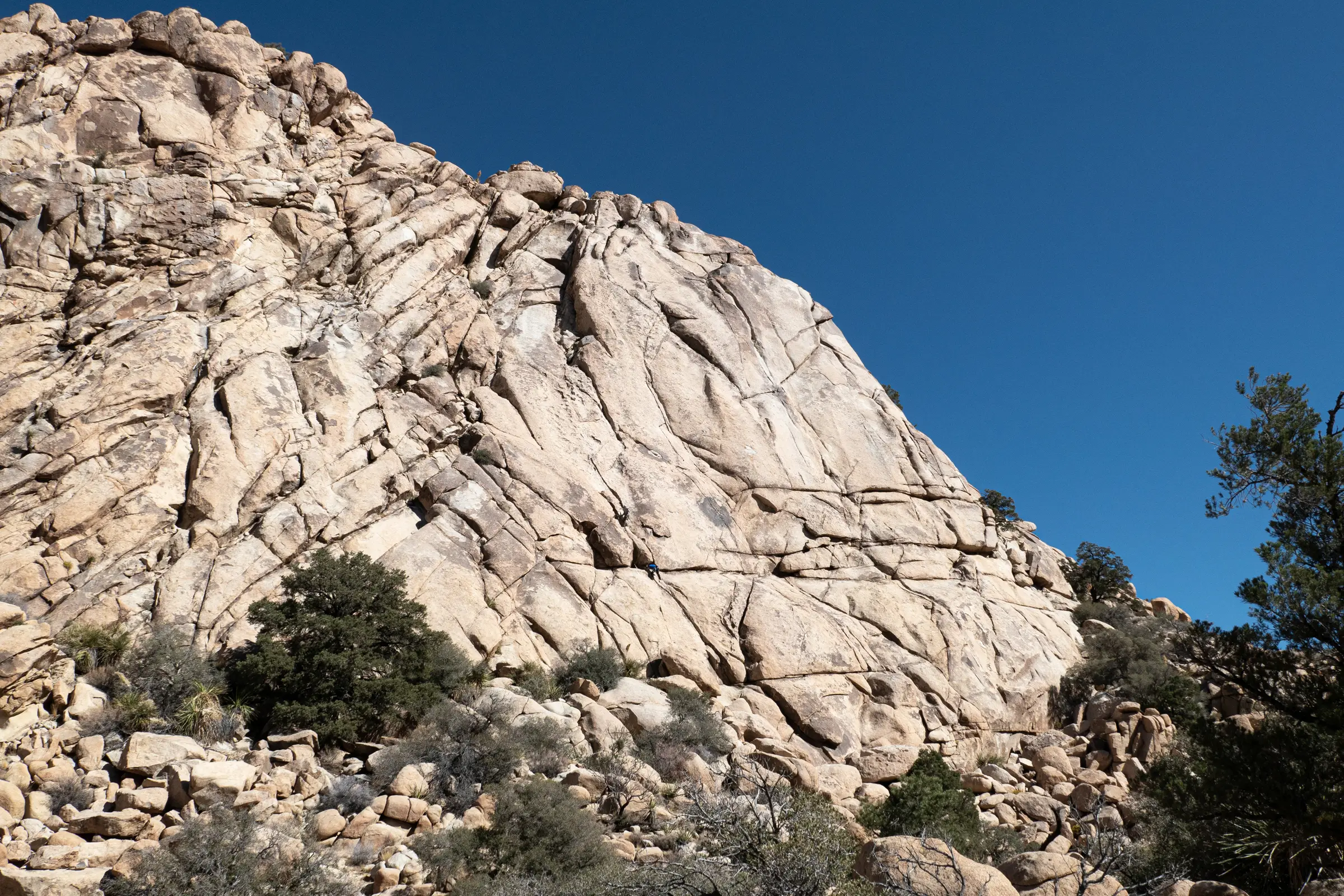
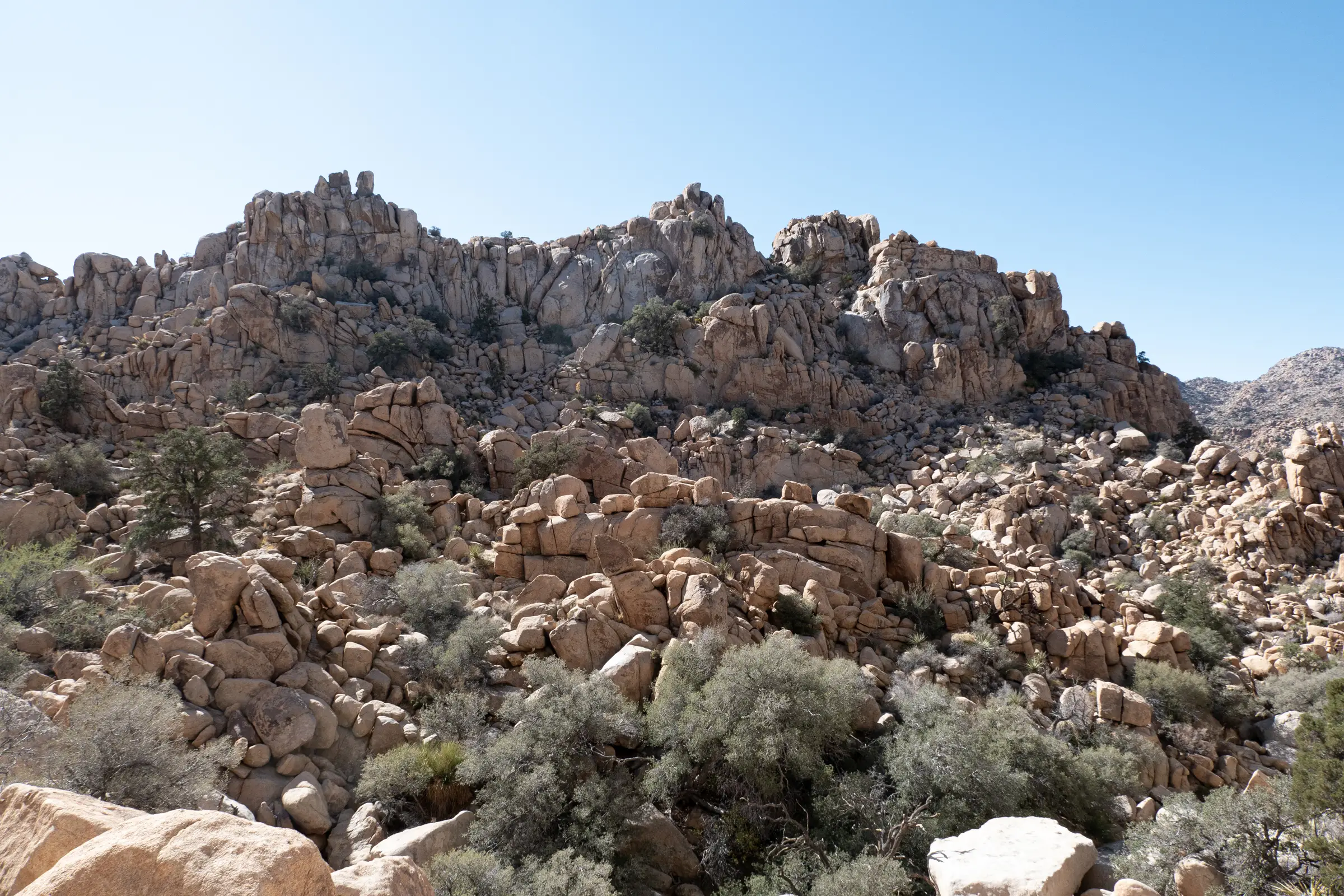

This section went as expected, maybe a move or two of 5.8, but rope drag was pretty serious. Despite minimal placements and lots of extension below, drag was really adding up. I had hoped to get through the traverse on the first pitch, but at this point getting to the bolted anchor would be enough.
Emma started up, none too impressed with the 3rd/4th class terrain and the lack of flow. To add insult to injury, I asked her to switch back to belaying once she crossed the ledge to the real climbing. With the drag sorted, I could now easily make the traverse. This would enable Emma to head over a bit earlier and bypass the bolts, which would eliminate some of the down climbing. I scoped the crack, glanced down and saw a #2 on my harness, and headed over.


The traverse went fine, but once I reached the main crack I discovered that my spare #2 was actually a .2 (whoops), and that I was much lower on gear than I realized. Now the quick interruption to the pitch was turning into an extended wait as I did my best with what was available. Everything was flaring or irregular, ugh. Ultimately a .4 in a flaring triangular pocket passed an aggressive bounce-test, which was backed up by a cluster of less-than-ideal placements. I used my last cam to back up the leg of the anchor that Emma could conceivably fall onto (after cleaning her last piece), and I called it good. Not my favorite anchor of all time, but nothing to really sweat either.
Finally Emma got to do some real climbing. So far this climb had been a logistical train-wreck. The false start on the difficult crack, tons of traversing and rope drag, and now my anchor shenanigans – we were both feeling a little meh on the whole endeavor. Emma scaled the crack system quickly and then and casually and confidently cruised the descending traverse to the anchor. We relaxed and gave ourselves a snack break. (After plugging a bomber #1 into the anchor cluster of course.)
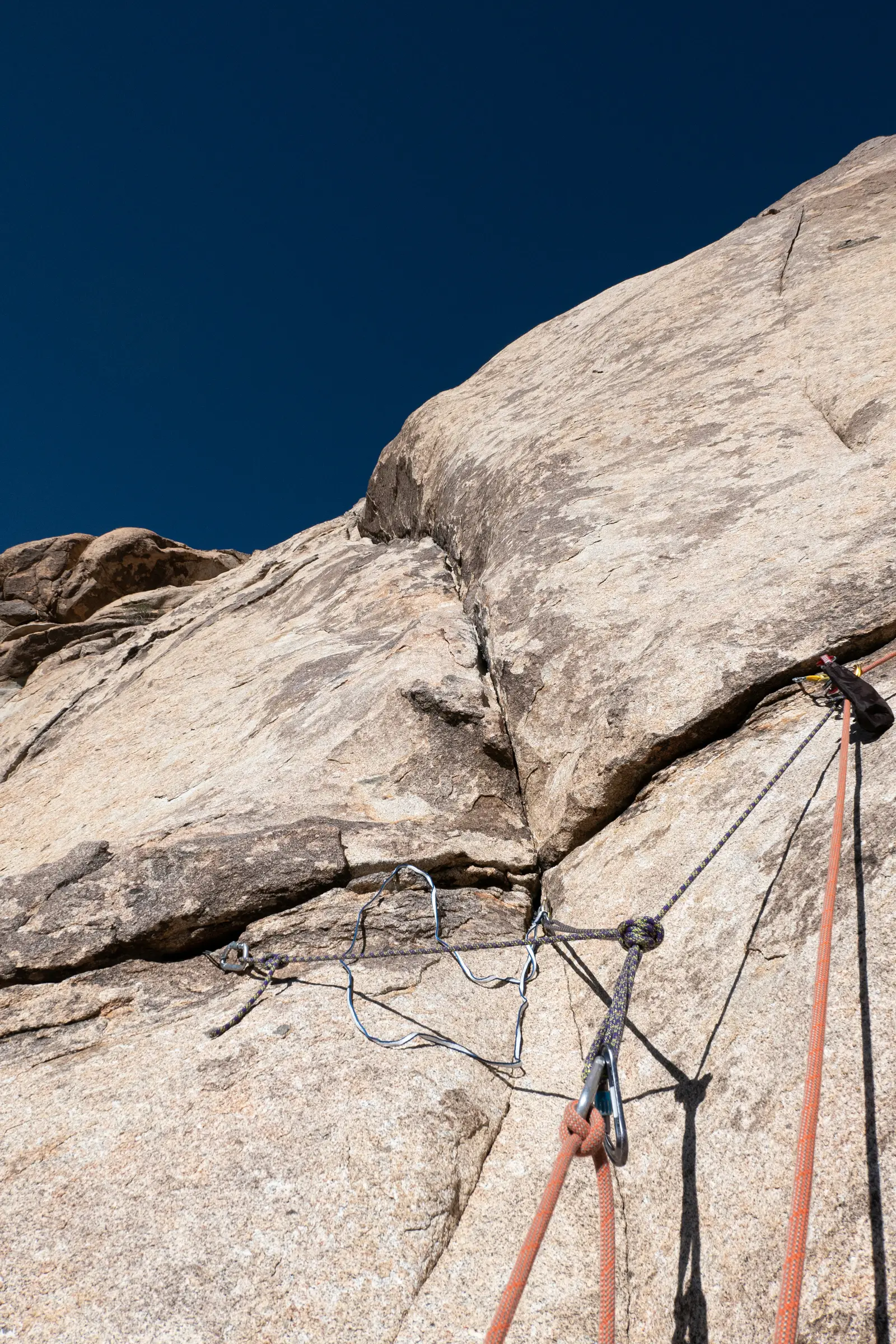


Our second pitch was much better and turned the whole experience around. The angled crack to the left was a fun start. Followed by improbable stemming over a mini-bulge, and then interesting textured cracks meandering up the face. It still had a lot of really easy terrain, but the exposure and scenery helped to elevate the whole experience. I think I deviated from the true line for the top out, as I veered right and took an unexpected looking bulge and small crack. I think I was halfway to Bird on a Wire. The feature looked tricky but probably went at 5.6 or lower. An easy but fun pitch.

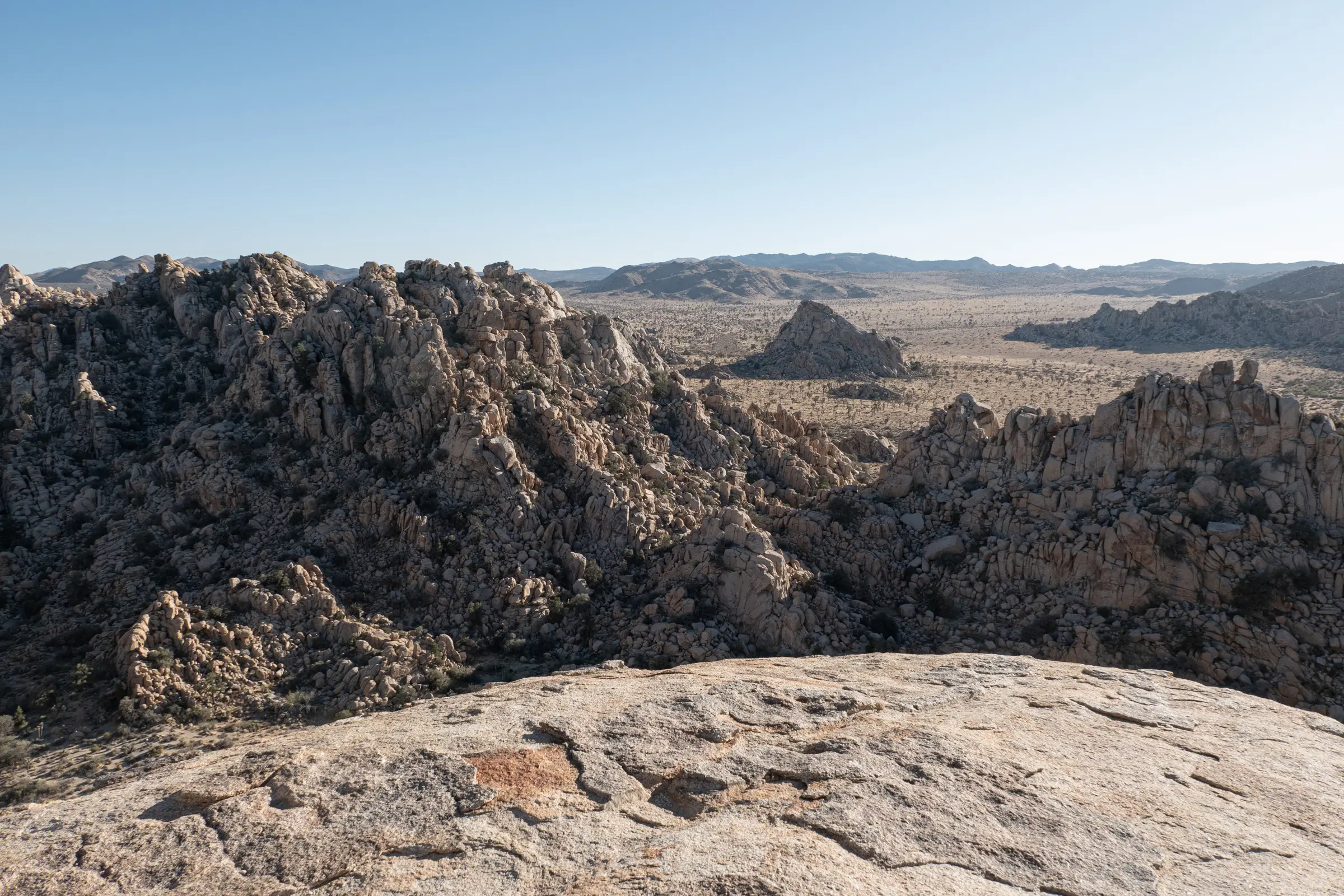
We topped out just as the light was going low angle and approaching sunset, with spectacular views of Hidden Valley. You always have your doubts about a J-Tree walk off, but the descent was no problem at all. Luckily Emma had a chance to chat with a (presumed) guide before leaving the ground, and got the critical beta: dead trees and nolina. We headed towards any dead trees or nolina we saw and had an easy time. Our choice to leave shoes at the base was the right call, as it was rock scrambling the whole way down.
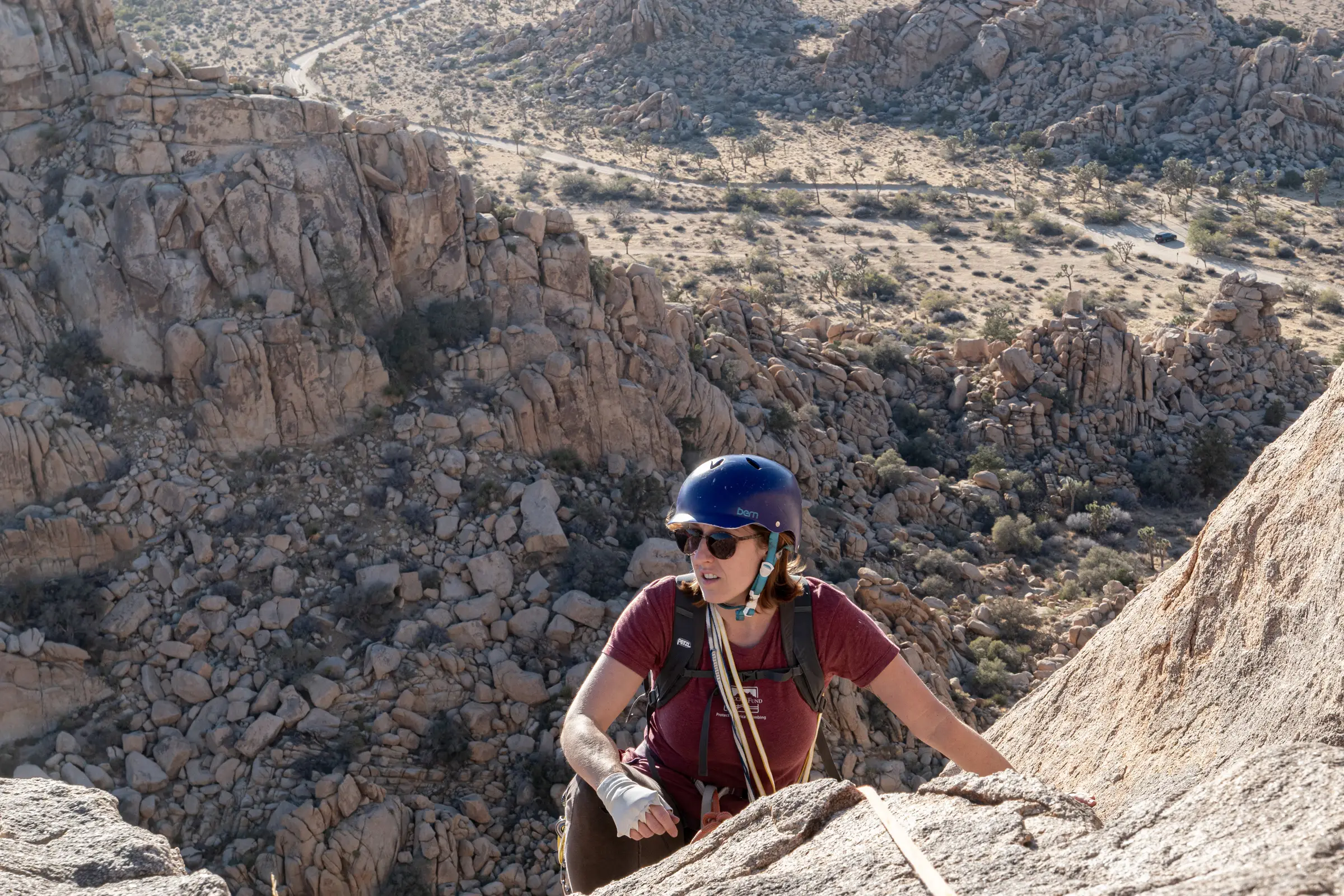


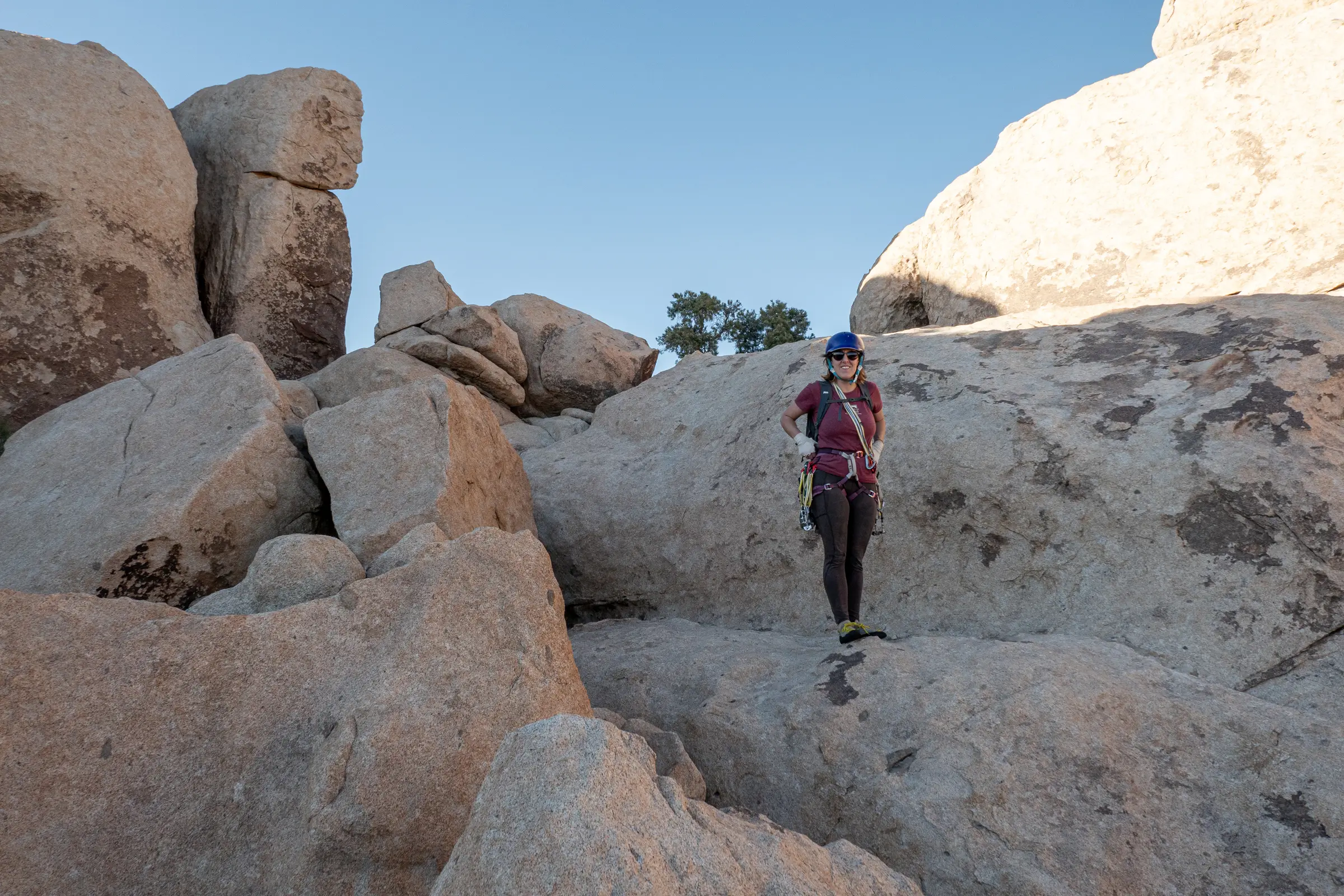
A quick walk down the wash and we were headed for Black Rock. It was time to meet up with Jack and Ellen at the campsite for dinner and drinks. All four of us were planning to head into Wonderland the next day for a party-of-three up Mental Physics.
We definitely had a blast on this one, but the “approach pitch” to this climb did leave a bad taste in our mouth, and felt like more work than it was worth. The upper section was great, but the lower half felt almost contrived in it’s awkward negotiations. We felt like our second pitch had tons of options, was aesthetic and interesting, and just an amazing time. Emma’s concern about a early-seventies John Long 5.8 were unfounded, as the climbing turned out to be fairly easy. More logistically challenging than difficult, and possibly an awkward choice for a newer team. Being able to improvise and adapt in the multi-pitch environment was essential for us to have a good time with it. Pitching it out as four (or five) pitches might make it easier for a team who was still dialing their systems, but there’s still plenty of calculus to be done regarding protecting traverses, follower protection, and route finding. So while the climbing wasn’t hard, I’d have to say that this one felt like a pretty advanced route.
Dappled Mare
5.8 – Three or four pitches – 350′
with Emma
Felt like a soft grade to us. Maybe a move or two of 5.8 on the way to the bolted anchor?
We did 2.5 pitches with an awkward re-belay to get me across the descending traverse after Emma walked across the main ledge. We extended our tethers so we could stand in the stance below the left-leaning crack. From here it was a rope-stretcher to the top out, which was a variation to the right, and possibly lower than the typical top out. Not sure about any of that.
But overall a great second pitch, would repeat more readily if the start wasn’t so awkward. Considering attempting and/or aiding Edgar Rice Burros as a direct line to the main crack system, which should allow for smooth rope feed all the way to (and possibly past) the bolted anchor.
Mid-wall anchor: used a .4 (decent), large nut (dodgy), and smallest X4s (dodgy). Adding a #1 once Emma arrived made it bomber.
Solo up to the start? Worth considering. Wouldn’t want to down climb it, but up should go ok. -edit: after the approach scramble to Isles in the Sky, definitely solo this.
